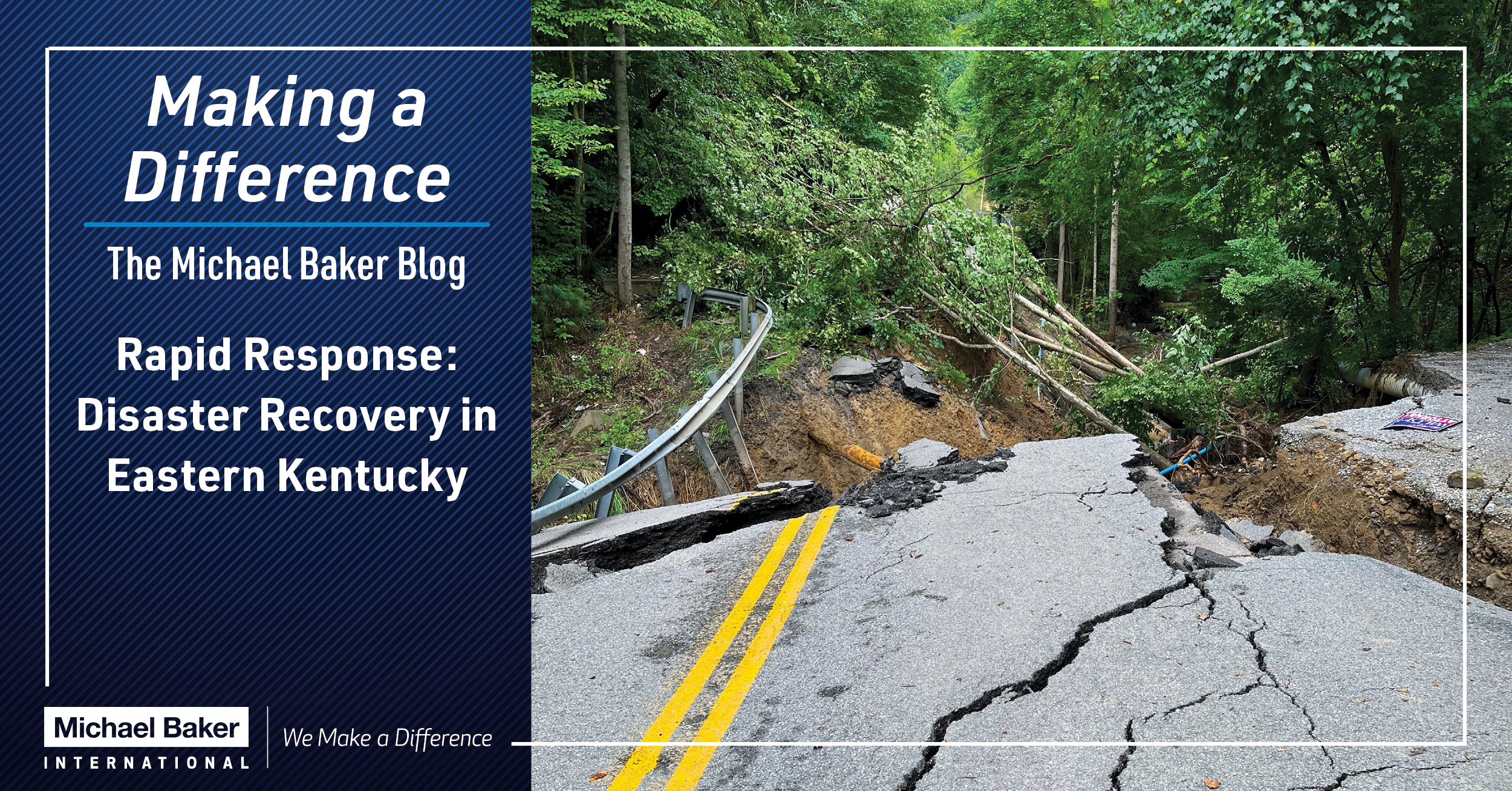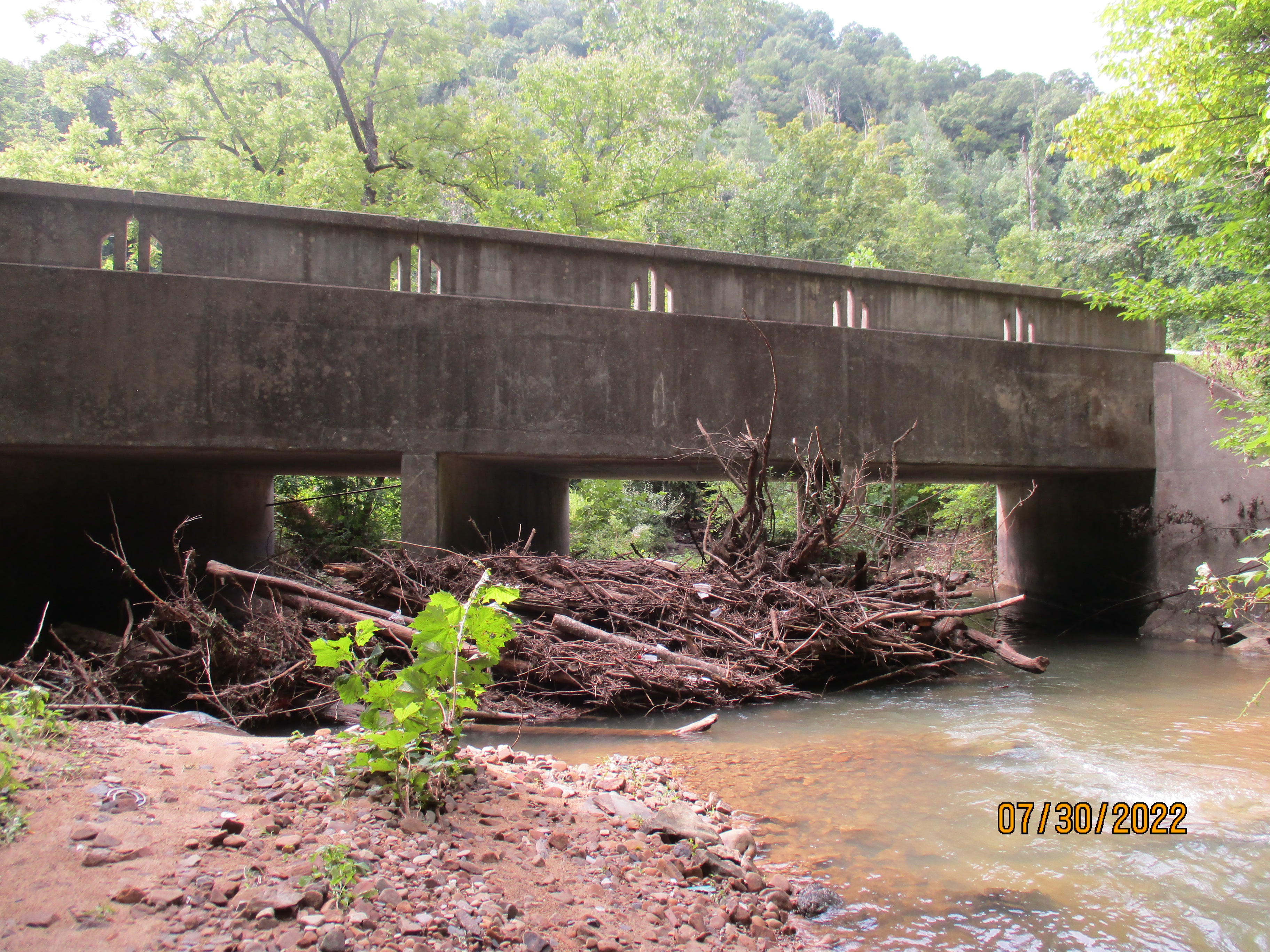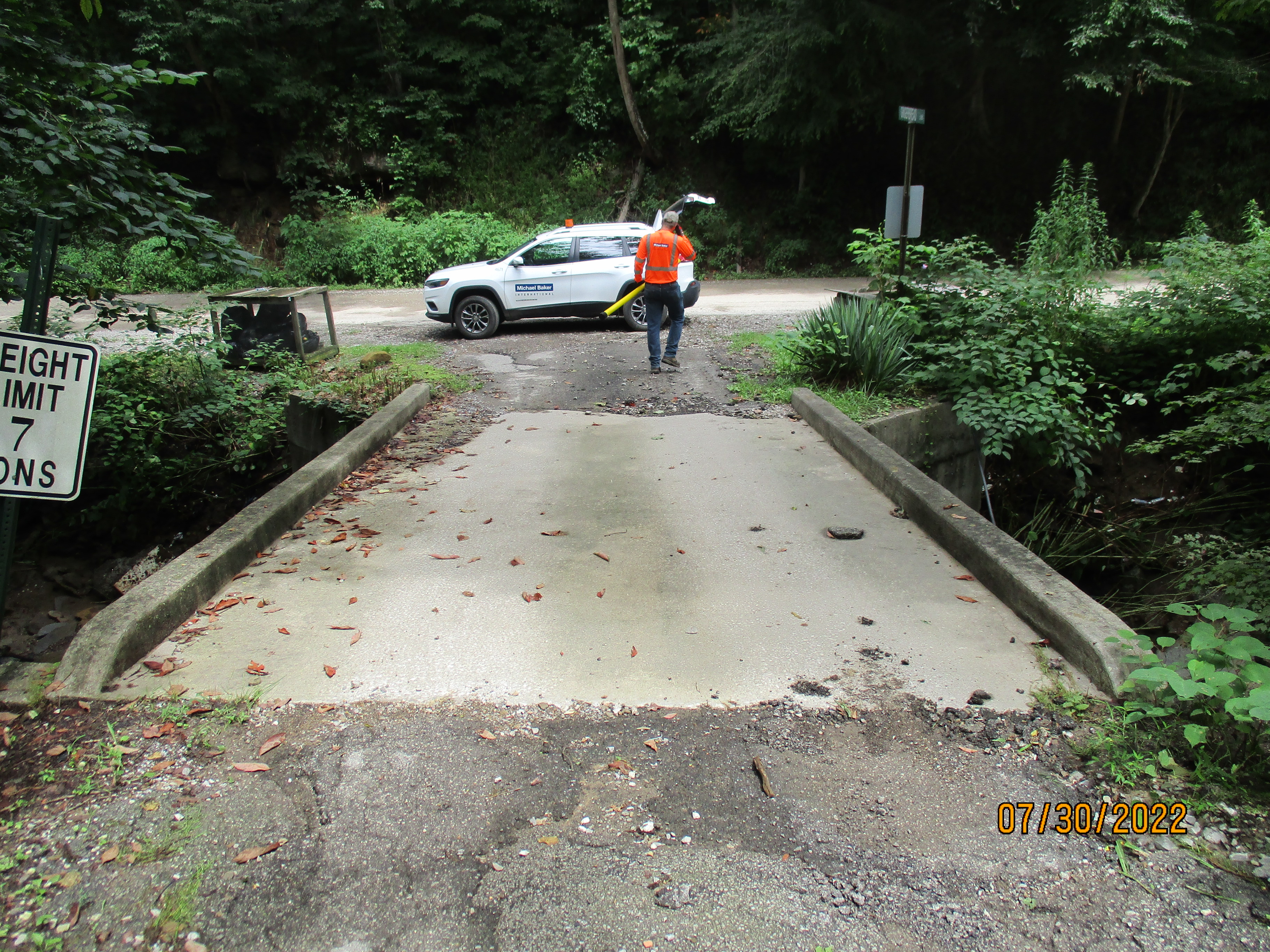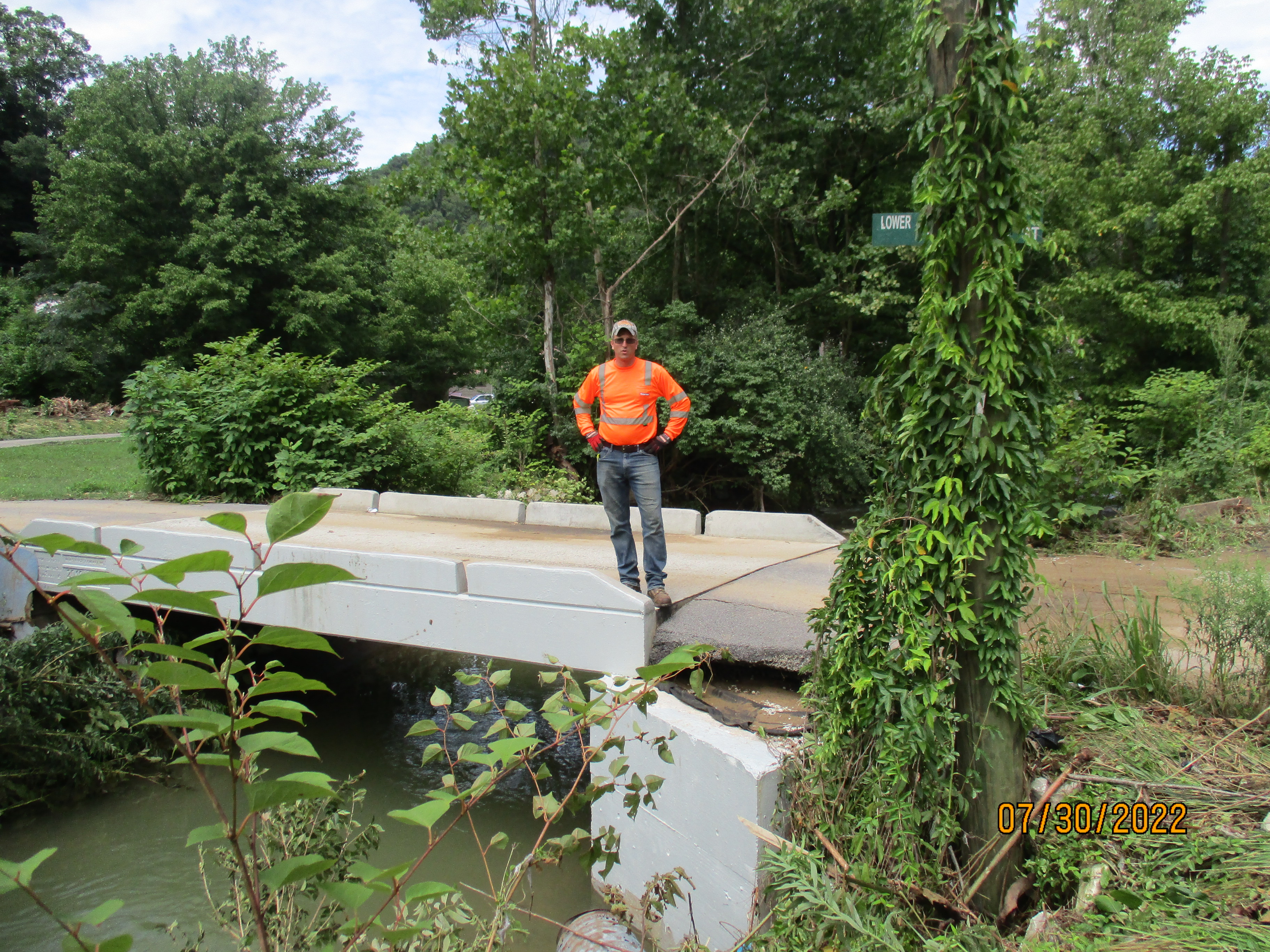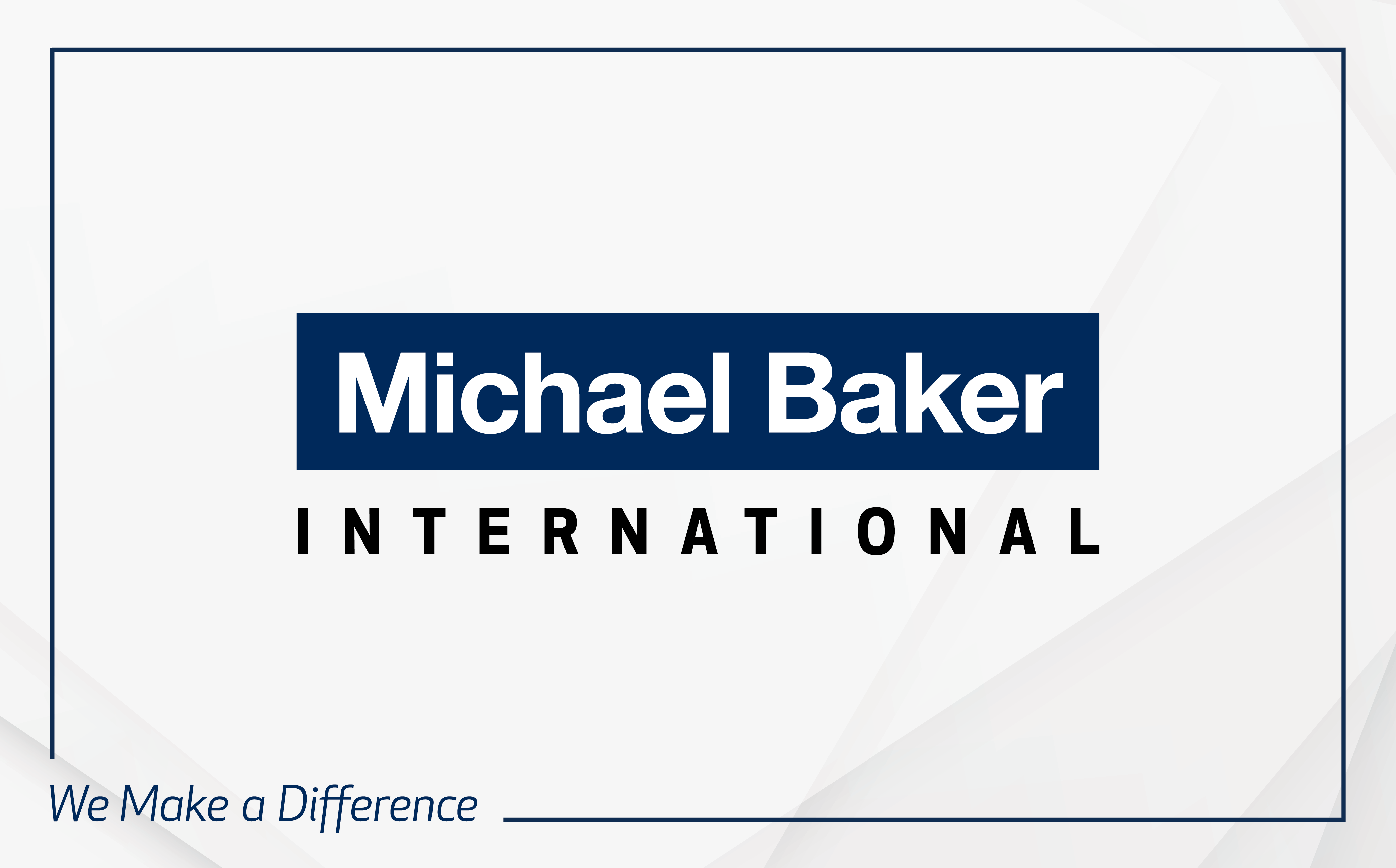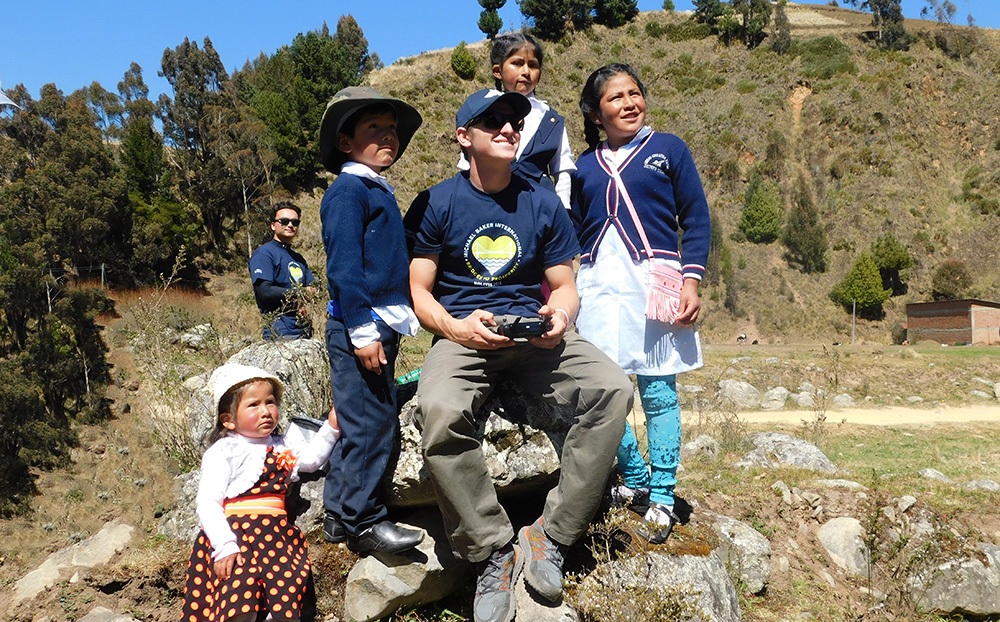In the summer of 2022, heavy rains, coupled with a drought that prevented soil from soaking up water, led to devastating flooding throughout Eastern Kentucky. By July 28, upwards of eight inches of heavy rain had fallen overnight and Kentucky Governor Andy Beshear declared a state of emergency. The rainfall continued through the next few days for a total of more than 10 inches. The impact was immense and widespread: many roads and driveways were blocked by debris or washed away and hundreds of bridges were damaged. In many instances, these roads and bridges provided the only access points for those living in this rural area and reestablishing these connections as quickly as could be safely done was of the utmost importance.
The road to recovery began immediately. Several members of Michael Baker International’s Bridge Practice quickly volunteered to work over the weekend assisting client Kentucky Transportation Cabinet (KYTC) in the aftermath of the massive floods. Collectively, KYTC, our Michael Baker team and other partners inspected nearly 1,100 bridges in seven counties hardest hit by the flooding. Over just two days, Michael Baker worked tirelessly to ensure the safety of more than 100 bridges in Perry County. Of those bridges, we recommended the complete closure of two bridges and identified eight bridges with structural issues that will need to be assessed in the future.
Following the initial inspections, our team was engaged to provide the design for 11 full bridge replacements under a separate contract. Notably, this group of bridges was the first let by KYTC in conjunction with the disaster response. Our team provided a full spectrum of services, ranging from road and bridge design to environmental, right-of-way (ROW) and utility design and coordination.
We approached each bridge design individually, selecting the best alternatives for each rather than trying for a one-size-fits-all approach. This resulted in various types of bridge, including aluminum box culverts, reinforced concrete box culverts and adjacent box beams. All of these structures are expected to be opened in 2023.
Throughout this project, we identified several best practices for disaster response and emergency recovery:
Assemble the Best Team
At Michael Baker, we’re able to draw from a deep bench of more than 3,500 colleagues across 100 offices. With our Wolf Pack Philosophy top-of-mind, more than 30 offices offered their assistance in the first hours following the flooding event and throughout the design process, our Louisville team was joined by colleagues from Pittsburgh, Pennsylvania; Chicago, Illinois; Harrisburg, Pennsylvania; Cincinnati, Ohio; Virginia Beach, Virginia; Greenville, South Carolina, and more. Because of the diversity in expertise at Michael Baker, we’re able to bring in the right people for the job, allowing us to work quickly and to the highest level of accuracy.
Communication is Key
This project needed to come together quickly, while keeping multiple stakeholders informed and involved every step of the way. We worked with various groups throughout the inspection process, and each of the 11 bridges being designed had a different set of stakeholders. We adopted a “more is more” mindset, overcommunicating to ensure all parties had the information they needed.
We also were on the ground with various agencies also tasked with disaster relief, including the U.S. Army Corps of Engineers (USACE) and Federal Emergency Management Agency (FEMA), the latter of which contributed funding for the emergency work.
Focus on the Right Alternative
As we moved into design, we focused on identifying the right alternative for each of the 11 bridges under Michael Baker’s scope. We needed to strike the balance between being fiscally responsible with getting the bridges designed and constructed as quickly as could safely be done. Each bridge was designed to meet not only modern standards, but also the specific needs of the location. Additionally, we focused on options that would expedite the process. For example, we had to design the bridges without buying additional ROW or relocating utilities.
Be Flexible
Under traditional circumstances, the design process would have commenced linearly, with hydraulics and surveying work occurring before design. However, we did not have the luxury of time and had to move these elements forward in parallel. This required us to make engineering judgment decisions and at times, we needed to rework designs based on what we encountered once we were in the field and into construction. Although this required more effort, being flexible allowed us to move the project into construction fast, ultimately restoring access for residents as quickly as possible.
Be Prepared
Throughout this project, we encountered challenges that had nothing to do with inspection or design. One such instance of this was the unreliable cell phone service in rural Kentucky, which added a layer of complexity when navigating the area and inventorying bridges. We also needed to be ready for conditions that you’d expect from a disaster recovery situation and we brought in supplies should they be needed.
